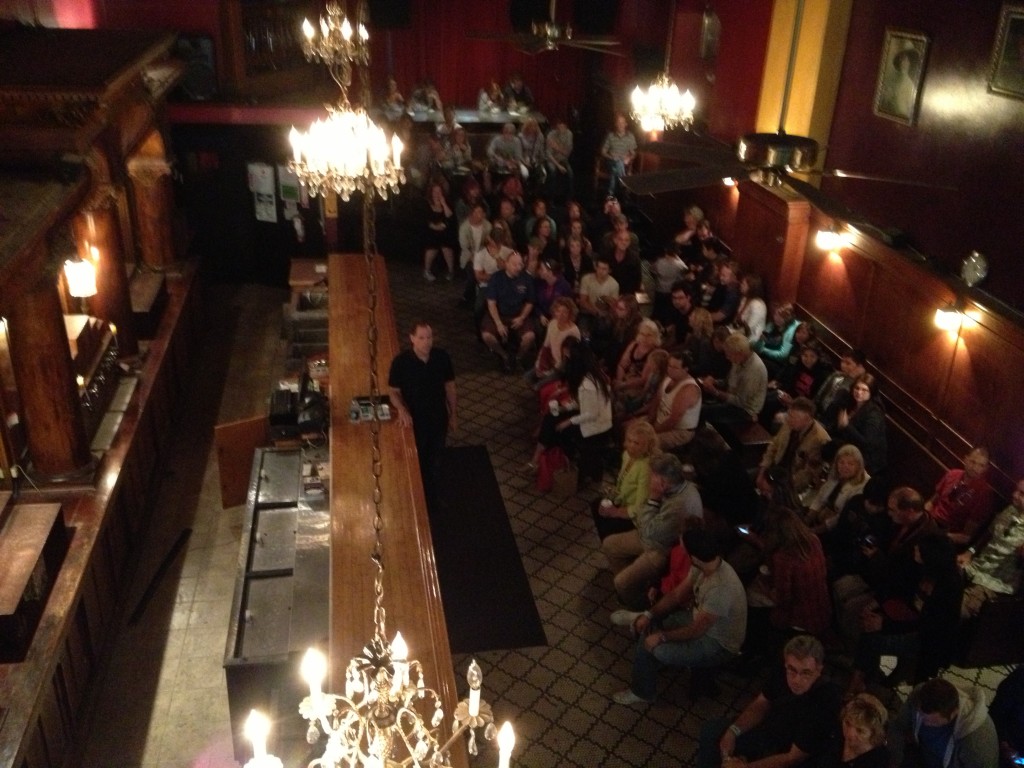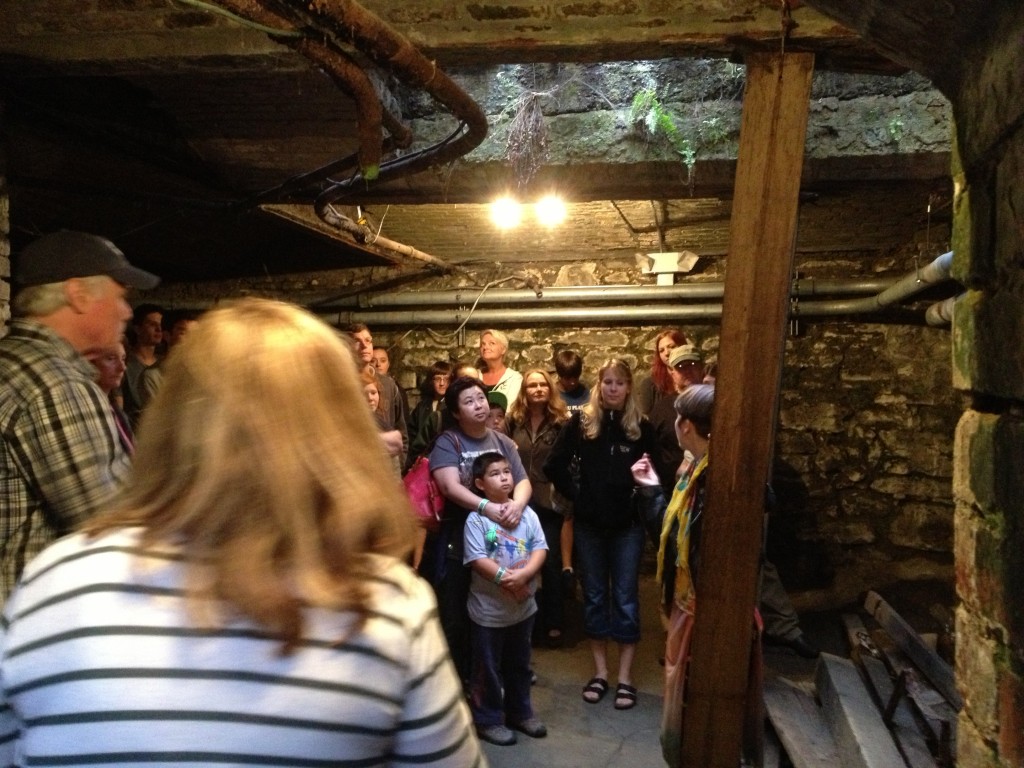The Underground Tour – Seattle
Seattle’s now-famous underground tour could go one of two ways – either it’s a kind of sex-and-the-city tour of the 1890s – one in which you grow to know a few key “characters” in Seattle’s history and appreciate the locations for their significance in the story, or it’s a mildly-interesting set of cellars with gangplanks, with lots of opportunity to check twitter and Facebook. Which experience you enjoy rests heavily on the shoulders of its tour guides. Dave, who began the tour with a fifteen minute dissertation on Seattle’s Founding Fathers, the origins of the phrase Skid Row, and the perils of sewage systems at sea level, did an effective job of laying the groundwork. It was up to the well-meaning auxiliary guides to continue to reverie out the door, through a present-day construction site, and across the street to the entrance to the first subterranean street. It would be a tall order for a seasoned veteran, and our guide, fresh out of drama school, did not hit it out of the park.
My attention wandered.
Luckily, the orientation, the location itself, and the baseline narrative from the auxiliary guide was enough to make the experience worthwhile.
Here’s the gist: Seattle was conceived-of and built by an unholy alliance of a lumber tycoon from the Midwest (you’ll see why that last detail is important later) and a challenge-seeking doctor who designed Cleveland. The lumber tycoon, one Arthur A. Denny, arrived on the shores of Puget Sound to discover 800 acres of useable land abutted by steep cliffs teeming with old growth lumber. Harvesting the trees, rolling them down the hill to the sawmill, and loading them onto ships bound for San Francisco, then in the throes of the gold rush, seemed like a no-brainer. The story of Seattle’s idiosyncratic beginnings lies between Denny’s idea and its execution.
I’ll summarize – building a downtown at sea level is a terrible idea. The streets flooded every high tide, which would have made life inconvenient even had Seattle not also been the site of an epic experiment in raw sewage management, at the behest of the second of the founding fathers, David “Doc” Maynard, who attempted to apply his city planning experience from Cleveland to Seattle’s tidal flat. Remember those steep hills from whence the timber was harvested? They were now also home to a mostly-male band of early-adopters, and those new homes were hooked up to the new city sewer, little more than a wooden sluice box that ran underground up in the hills but – this is key – had to surface and run about eye-level in the sea-level downtown. For reasons I won’t get into, it was prone to flooding and occasional explosion – suffice it to say when the mostly-wooden downtown was beset by fire in 1889, the founders recognized the opportunity to start from scratch, and built a new downtown, conceiving an elaborate plan to raise the street-level by one story. To accomplish this, the new brick buildings had two entrances, one on the ground floor and one on the second floor, and when the nearby hills were razed to “fill in” the downtown, the second floor became the first.
The vanished street-level, with sidewalks, shops, banks, bars, and houses of ill repute, is the subject of the present tour, actually one of a handful of tours.
So, bearing all this in mind, the locations are interesting. You stand under a roman-arched ceiling, staring up at skylights to the street above and listen to the tour guides speak about how the sidewalk was once below the level of the street, 30 feet below in places, which necessitated the use of ladders to get from sidewalk to street level, and resulted in at least several “involuntary suicides” by falling every year. You see storefronts, an old bank vault, a barroom, and a “sinking sidewalk” dating from the city’s attempt to control its rat problems by “paving over” a fetid soup of organic stuff and sewage, a soup which, predictably, sank under the weight of the concrete.
What was missing was an overarching narrative. Dave grabbed our attention in the orientation with a far more detailed account than my abstraction above, but the walking tour felt like a series of factoids only loosely related to the tale of folly and derring do that began the city, and more likely cobbled together to explain the locations. Questions that lingered in my mind were:
-How big a part of the now vanished original street-level city is the territory covered by the tour? If that’s the whole enchilada, it’s kind of yawn-worthy, whereas if it’s only one-hundredth of a vast network of now-hidden streets, that’s cool.
-In what order did the events that shaped the “razing” and “raising” of the city transpire? How were they connected to the original cast of characters?
-What became of those characters – Mr. Denny and “Doc” Maynard? What was Seattle’s turning point? Was the “raising” of the city a success, from a city planning standpoint?
Etc.
All said-and-done, the tour is still worthwhile, I dare-say even if you only sit through the orientation, then leave partway through. Alternately, you can read up on the history yourself in the book the tour’s founder, Bill Spiedell, wrote, before taking the tour, so you’re not wholly dependent on the tour guide.
Even without all the nail-biting drama of a page-turner, it’s still not a bad way to kill an afternoon.
The Seattle Underground Tour is administered through www.undergroundtour.com/, where you can reserve tickets and read more information.



2 Comments
Kathleen Foley
August 1, 2013Wow – so cool!
Pike Place Market - What to Do In Seattle | Smart Getaways for Couples
August 5, 2013[…] geography. (The Cloisters and Inwood do, though, and it’s also gorgeous.) I know from the underground tour that the original downtown was built on this tidal flat, and the hills above it were the […]